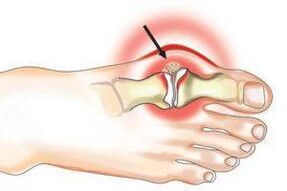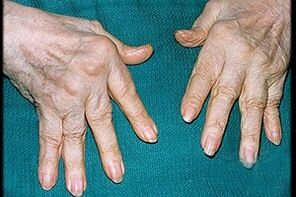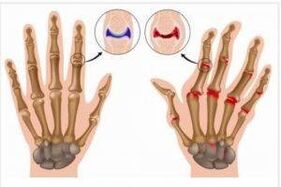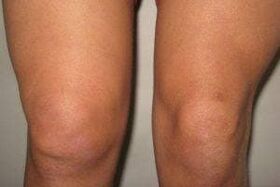Many people do not always understand the difference between arthritis and arthrosis due to the similarity in names.Both diseases involve the joints, but the causes, symptoms, diagnosis and therefore treatment are fundamentally different.It is very important to determine the nature of the disease at an early stage in order to begin appropriate treatment.
Arthritis, osteoarthritis and their effects on joints
To begin properly treating your joints, you must first determine which type of disease you are susceptible to.And to do this, you need to understand for yourself the difference between arthritis and arthrosis.
Both diseases affect the joints but have different symptoms and causes.
What is arthritis?

Early or late joint disease affects about 10% of the population, often manifesting with age.Arthritis is a deformation of the joints and a decrease in their mobility.Its correct name should be considered osteoarthritis.
The main symptoms are pain when moving and loss of mobility, reduced range of motion in the affected joint and the appearance of an unpleasant crunching, dry and sharp sound when moving.Deformities can also be observed with osteoarthritis.For example, it is easy to notice changes in the shape of the knee joint.
Osteoarthritis can be detected in its early stages.The diagnosis is complicated only by the patient's negligent attitude towards his own health.Pain in the early stages only appears during exertion, so many people do not take it seriously, which aggravates the disease and complicates treatment.
Arthritis and its symptoms

While joint disease is only a disease of the joints, arthritis is often infectious and affects the entire body.Such diseases are one of the manifestations of the general condition of the body.Treatment and diagnosis are much more difficult.Joint pain with swelling;the pain doesn't go away, it just increases, much faster than with arthritis.Infectious arthritis not only affects cartilage tissue, but also negatively affects the heart, kidneys and liver.Although arthrosis is about five times less common than arthrosis, their treatment is much more difficult, they pose a great danger to the patient's life, and the causes of the disease can be very diverse.
The main symptoms of arthritis are:
- high temperature;
- dermatitis, psoriasis;
- general weakness of the body;
- eye discomfort;
- discharge from the genitals;
- chills, increased sweating.
The skin around the joint is especially hot and swollen.
How is arthritis different from arthritis in terms of the nature of the disease?

To better understand the causes of such diseases, you need to understand their nature and classification.
All joint diseases can be divided into two groups – inflammatory processes and dystrophic diseases.
To determine the nature of a disease whose symptoms are similar to another, it is important to diagnose and determine the cause of a specific process in the body.
The main problem with both diseases is an imbalance in the joints between destruction and repair.The stronger the imbalance, the faster bone tissue is destroyed, which is manifested at the cellular level by a lack of oxygen and nutrition for them, and poor production of healthy components of bone tissue.
Usually, this process goes unnoticed and when the number of dead cells exceeds the norm, pain appears.So, the body tries to "complain" about excessive stress and ask for help.
Dystrophy
Often, such diseases have characteristic names that have the same ending: arthritis, osteoarthritis, ligament degeneration, osteoarthritis.Such diseases appear with age or with constant physical activity.For example, soccer players often suffer from knee arthritis even at a young age.Most athletes are susceptible to knee diseases.
Joints have painful symptoms due to thinning of cartilage tissue, called degeneration.Such diseases develop due to the general aging of the body, a sedentary lifestyle and the infectious nature of diseases that can be accompanied by the development of osteoarthritis, osteoarthritis and similar diseases that only accelerate the degenerative process.The body does not have time to replace dead cells, that is, to regenerate, and the reverse process occurs.The most difficult thing to prevent is tissue degeneration in the knee joint, which is very common.
Inflammatory disease

Such illnesses have similar outcomes and often end in -it.Often infectious, bacteria or viruses can cause inflammation of one or more joints, with corresponding symptoms:
- high temperature;
- swelling;
- sweat
They can also be autoimmune or allergic in nature, where the body turns against its own cells.In this case, knee pain and swelling may indicate a serious problem with the immune system.In case of pain in the knee or any joint, you should immediately consult a doctor for a comprehensive diagnosis of the body.
Often the cause of joint pain can be salt deposits in the cavities and tissues around the joints.In this case, metabolic disorders are likely to occur.
Osteoarthritis and arthritis - treatment
Since the causes of the disease are completely different (with osteoarthritis, mechanical wear of the joints and infectious arthritis), the treatment will be completely different.This is why it is so important to differentiate between these two diseases.
Let's look at the treatment using the example of the knee joint.In both cases, it is necessary to reduce the load as much as possible.Arthritis of the knee or any other joint cannot be cured because the process is irreversible.However, regular use of cartilage protectants can slow this process, stimulate cartilage regeneration and possibly reduce pain in the knee joint.
Infectious arthritis can be treated with antibiotics and drugs that affect the immune system.In some cases, the treatment process will have to be repeated, but the disease itself is completely curable.
If the diagnosis suggests rheumatoid arthritis, the disease will have to be treated for a very long time with small doses of cytostatics and corticosteroids.All this is used in combination with anti-inflammatory drugs.Modern treatments help achieve long-term remission and minimize the use of hormonal drugs.







































